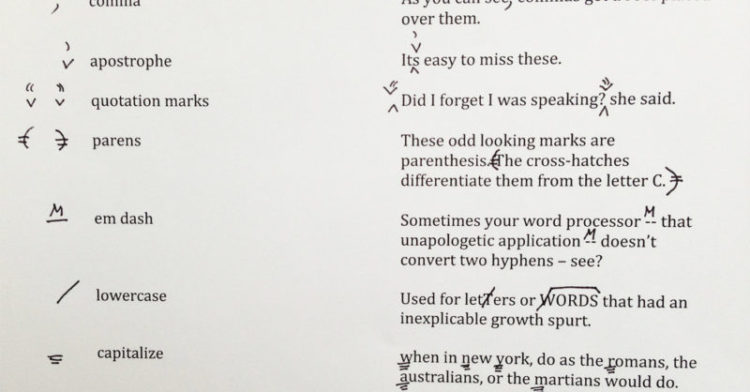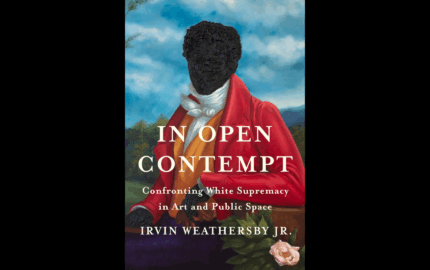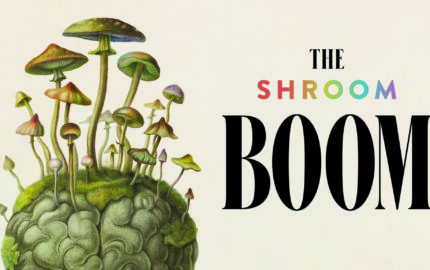Clean copy — no typos, proper grammar, consistency of style, correct spelling — probably should be the first rule of effective pitching. Lapses in the so-called little things can undermine confidence in the big things, like thoroughness of reporting and respect for precision.
Come to think of it, clean copy should be such a given that it shouldn’t have to be a reminder, much less a rule.
But “should” lives in the world of the ideal, and journalists toil in the realm of the real. Even the most careful of us get tripped up by all manner of things. Among my tripwires: the press of deadline; too-fast and too-fat fingers on the keyboard; a small and smudgy laptop screen; tired eyes after a long day of reading; competing and confusing style guides, a few gaps in my otherwise solid education in the fundamentals of English. Even as I type that list, I realize I’m never quite sure if I should be using commas or semi-colons, especially to set off the last phrase. (I’m sure someone out there will set me straight, and someone else out there will disagree.)
Related stories
Add the fluidity of language in the digital age, and the potential for error increases. If I’m comfortable typing a version of shorthand in my fly-by social media communication, that can creep into the muscle memory of my fingers for more formal communication.
Then there is the loss of back-up. In my newsroom days, at least three people read behind me before my stories went to press, and often five. Magazine freelancers don’t have a copy desk a few feet away, but their stories also go through layers of editing and proofing once it’s accepted for publication.
These days, most of us edit and proof our own copy. And here be dragons. What I think of as writer’s scotoma sets in. Physically, scotoma is a blind spot or partial loss of vision. But it seems we suffer mental scotoma as well: The eye sees what the mind wants it to. That’s why one name gets subbed for another, or you read over a misspelled word without noticing it.
Clean copy always matters in professional work. And we all make mistakes. Mine are embarrassingly frequent in posts and the weekly Storyboard newsletter. As a writer, I file pretty clean copy. But I’ve never been a copy editor; I don’t have that training or keen skill set. No matter how often I proof myself, little things slip through: transposed letters, an extra word that didn’t get taken out when rewriting a sentence, an extra space between words or sentences. Small stuff? Maybe. But as a journalist friend once told me: “One thing the public doesn’t know about journalists is how hard we work to get it right – and how every mistake is like an icepick to our heart.”
Usually, we can correct those mistakes in an updated post. Or maybe they get forgotten as a reader moves onto other things. But sometimes, small missteps can undermine intentions and talent.
Those times include story pitches and especially first-time pitches to an editor or publication. They are like a first date: That first impression sticks, leaving little wiggle room for an off night. So it’s important to have a basic checklist for flyspecking your own copy and to follow that checklist.
Be careful with names
My name starts out tough. People who focus on getting all 11 letters of my last name often blow right past my first, which poses its own challenges. Just last week I got an email from a professional colleague who addressed me as Jackie. Nope, not my name.
Common names can be even trickier. Michele or Michelle? Steven or Stephen? Ann or Anne?
Spelling names correctly in the body of your pitch shows you know your subject. Spelling the name of the person you’re pitching to … Trust me, they’ll notice if you got it wrong.
Check published clips — and verify them
Once a name or other factoid is archived on the internet, it takes on the aura of accuracy — even if it’s wrong. So look at multiple story clips that mention a person or subject you’re writing about. If a name is involved, try to find the most direct source: the person’s website or updated professional bio. If you reference an event or date, triangulate your reporting by checking a few trusted sites.
Build in foolproof proofing habits
Take a bit of time between writing and hitting the SEND button. Even if it’s just a five-minute break, walk away from the screen, then go back and read with somewhat fresh eyes. This applies to emails and social media posts as well as more formal docs.
Ideally, print out what you’ve written and proof the hard-copy, with a marker in hand to highlight verifiable facts and any mistakes.
If you can’t do that, change the size and even type of font on your document, and proof that way. It can help guard against scotoma.
Have an eagle-eyed friend read behind you
No matter how careful you are, you won’t likely see all of your mistakes. You will be too caught up in the heart of your pitch to notice the little glitches. Ask someone else to proof your copy. Tell them to flag any obvious mistakes, but also to raise questions about things they aren’t sure of.
Check your links
The person receiving your pitch is busy, distracted, or just plain cranky. Don’t exacerbate that by making them hunt around to find their way through funky links. Make sure hyperlinks within your pitch open to the right reference, and test them with the three primary browsers (Google Chrome, Microsoft Edge, Apple’s Safari). If you link to your past clips, introduce each up with a quick sentence about the story and your role in it. In other words, provide the same kind of tease you would to a story on a professional news site.
Be selective with links
A reader should be able to understand your story without having to do a lot of additional research or clicking. The same is true of editors receiving your story pitch. Definitely include links that prove your research, but make sure you summarize the point you are making in the body of your own copy.
Be especially selective with links to your own clips
Think about which work best represents you to the editor or publication you’re pitching. Include that – not everything your mother said was great.
Stay professional on casual media
Email and social media can feel like a conversation with a friend over drinks. We are granted latitude for shorthand or lapses in good English. But in email pitches to editors (which many prefer on the first contact) or social media reach-outs, apply the same rigors as you would in a more formal pitch. Don’t let the platform make you lazy.
Be consistent with style
Different publications and platforms adhere to different style guides. AP and Chicago dominate — at least in the U.S. But some publications use a blend of the two and add their own rules based on location or content. And style, like language, changes with the times. It makes sense to know enough about a publication you’re pitching to get a bead on the style they use. But if it’s not clear, or you’re not grounded in a particular style, then pick the one you know and use it. Consistency is the key.
This far from an exhaustive or sure-fire plan. And at some point, you need to hit the SEND button on that fabulous story pitch. Just make sure it shows your best professional self.
Next in our Fatal Flaws series: Proper clips research.



